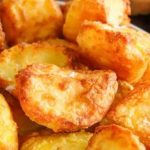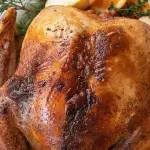Going gluten-free doesn’t mean giving up good baking. If you’ve ever tried to make cookies or muffins without wheat flour and ended up with something dry, crumbly, or dense—you’re not alone. I’ve been there too.
Gluten-free baking can feel a bit unpredictable at first. But once you understand how the ingredients work and adjust your approach just a little, the results can be surprisingly amazing. In fact, some of my favorite recipes today are completely gluten-free—and you’d never know the difference.
If you’re baking for yourself, someone with celiac, or simply exploring gluten-free options, these tips will help you bake with more confidence and get consistently great results.
Let’s make gluten-free baking less stressful—and a lot more fun.
1. Start with a Good Gluten-Free Flour Blend
Here’s the truth: not all gluten-free flours work the same. If you’re using just one type—like almond or rice flour—you’ll probably end up with odd textures. That’s because gluten-free baking needs a balance of flours, starches, and binders to mimic the structure of wheat.
A good gluten-free blend already does this balancing act for you. Look for a mix that includes a variety of flours (like brown rice or sorghum), starches (such as potato or tapioca), and maybe even xanthan gum. Trust me—it’s worth having one solid blend you can rely on.
2. Use a Kitchen Scale, Not Just Measuring Cups
If I could recommend one tool to improve your baking overnight, it’s a digital scale. Why? Because gluten-free flours can vary in weight and texture. A packed cup of almond flour weighs a lot more than a loosely scooped one—and that inconsistency can throw off your entire recipe.
Measuring by weight (in grams) gives you accuracy and helps your recipes turn out the same every time. It’s a small shift that makes a big difference, especially when you’re working with delicate, gluten-free batters.
3. Let Your Batter Rest Before You Bake
This tip changed everything for me. Once your gluten-free batter is mixed, give it 20–30 minutes to sit before baking. Why? Because gluten-free flours—especially ones with rice—need time to absorb moisture. Without this rest, your cake or bread might turn out gritty or dry.
You’ll notice a smoother texture and better structure after resting. It also makes the batter easier to spread or scoop. So next time, don’t rush—use that pause to preheat your oven or clean up.

4. Don’t Skip the Binding Agents (Like Xanthan Gum)
Wheat flour has gluten to hold everything together. Gluten-free flour doesn’t. That’s where binders like xanthan gum or guar gum come in—they help provide structure and elasticity to your dough.
Some flour blends already include them, but if yours doesn’t, you’ll want to add about ¼ to ½ teaspoon per cup of flour. It makes a big difference, especially in cookies, cakes, and breads, where you want a chewy or soft texture instead of a crumbly mess.
5. Mix It Well—Really Well
Here’s something that surprises most people: you can mix gluten-free batters more than you would with regular flour. There’s no gluten to overwork, so don’t worry about making your baked goods tough.
In fact, mixing thoroughly helps activate your binders and evenly distribute the starches. Just stop once everything looks smooth and well-combined—no dry patches, no lumps.
6. Add More Moisture Than You Think You Need
Gluten-free flours are a bit thirstier than regular ones. They soak up more liquid, which means if you follow a regular recipe without adjusting, your baked goods might come out dry or crumbly.
What’s the fix? Just add a little extra moisture. That could be a splash of milk, a bit more oil, an extra egg, or even something like mashed banana, applesauce, or yogurt. You’re not making it soupy—just giving your recipe enough to stay soft and moist after baking.
7. Prep Your Pans Like a Pro
Gluten-free baked goods have a sneaky habit of sticking to everything. I’ve had muffins tear in half and cakes crumble on the way out of the pan—until I started being more generous with nonstick spray and parchment paper.
My rule? Line your pans when possible (especially for brownies, cakes, or bars), and always grease them well. It saves you the heartbreak of your perfect loaf getting destroyed in the last step.
8. Lower the Oven Temperature Just a Bit
You might not realize this, but gluten-free batters often brown too fast—especially on the outside—before the inside has fully cooked. That can leave you with burnt edges and a gooey middle.
The solution? Try baking at 10–15°F (about 5–7°C) lower than the recipe says, and add a few extra minutes to the bake time. This helps everything cook more evenly without drying out or overbaking the top.
9. Bring Everything to Room Temperature First
Cold ingredients—like eggs straight from the fridge or melted butter that’s gone solid—don’t mix as well. That uneven mixing can mess with the rise or make your batter clumpy.
I always take a few minutes to bring my milk, eggs, and butter to room temperature before baking. It sounds like a small thing, but it helps your ingredients blend smoothly and gives your baked goods a better texture from the start.
10. A Little Acid Can Make a Big Difference
Here’s a pro trick: adding something slightly acidic—like vinegar, lemon juice, or buttermilk—can help your gluten-free baked goods rise better and feel lighter.
Why? The acid reacts with baking soda and improves the structure of your batter. I usually add about 1 teaspoon of vinegar per cup of gluten-free flour for cakes, muffins, and quick breads. You don’t taste it, but you’ll notice the difference in texture.
11. Don’t Overfill Your Pans
Gluten-free batters behave a little differently when they bake. They might not rise the same way as wheat-based ones, and if you fill your muffin cups or pans too full, you risk overflow—or worse, a dense, sunken center.
Here’s my go-to rule: fill pans about ⅔ to ¾ full, and give the batter a little smoothing on top with a spatula. This helps everything bake more evenly and gives you that clean, professional look without the mess.
12. Check Your Baking Powder and Soda Are Still Fresh
When you’re baking without gluten, leavening agents do a lot of the heavy lifting—literally. If your baking soda or baking powder is past its prime, your baked goods may fall flat. And trust me, no one wants a sad, dense cake.
It’s a good habit to replace these every 6–12 months, even if the canister looks full. Want to test it? Drop a little baking soda in vinegar or baking powder in warm water—it should bubble up quickly. If not, it’s time to replace it.
13. Don’t Rely on a Toothpick Alone for Doneness
I used to think a clean toothpick meant a cake was done—until I cut into it and found a gooey center. Gluten-free batters can be tricky that way, looking golden and puffed but still underbaked inside.
Here’s what I do now: test in a few different spots, and for breads or denser bakes, I even use a digital thermometer. If it reads around 205°F to 210°F (96°C to 99°C) for breads and 190°F to 200°F (88°C to 93°C) for cakes, you’re good to go.
14. Let Baked Goods Cool Completely Before Cutting
I know it’s tempting to dive right in—especially when your kitchen smells amazing. But gluten-free baked goods need cooling time to finish setting. If you cut too soon, they’ll fall apart or feel gummy.
Give them at least 10–15 minutes in the pan, then move them to a wire rack to cool fully. For breads, I usually wait 30–60 minutes before slicing. It’s tough, I get it—but it’s worth it for the texture.
15. Keep Notes and Tweak as You Go
One of the best things I ever did for my gluten-free baking was start keeping a little notebook. Every flour blend is different. Ovens vary. Sometimes the weather even plays a role.
Jot down what flour you used, how much moisture you added, how long it took to bake, and what the texture was like. These notes will help you tweak recipes until you get them just right—and save you from repeating the same mistakes twice.
FAQs
What’s the best gluten-free flour for baking?
The best gluten-free flour blends usually combine several types of flour (like brown rice, millet, or sorghum) with starches such as tapioca or potato, and a binding agent like xanthan gum. Look for a 1:1 baking blend labeled “cup-for-cup” for the easiest substitute.
Why do my gluten-free baked goods come out dry?
Gluten-free flours absorb more liquid than wheat flour, which can make your baked goods dry or crumbly. Try adding extra moisture—like an extra egg, a spoonful of yogurt, or a splash more milk—to improve softness and texture.
Can I skip xanthan gum in gluten-free recipes?
Xanthan gum helps hold your baked goods together by replacing the elasticity of gluten. If your recipe doesn’t include another binder, skipping it may cause your baked goods to crumble or fall apart. You can also try guar gum or psyllium husk as alternatives.
How do I make gluten-free cakes rise better?
To help gluten-free cakes rise evenly, use fresh baking powder or baking soda, include an acid like vinegar or lemon juice to activate them, and avoid overfilling your pans. Resting the batter also improves structure and texture.
Final Words
Gluten-free baking doesn’t have to feel like guesswork. Once you understand how these ingredients work—and make a few smart adjustments—you’ll be amazed at what you can create. From perfectly soft muffins to golden loaves of bread that slice cleanly, it all comes down to the small things: resting your batter, weighing your ingredients, using the right blend, and keeping your oven honest.
Remember, every baker has a few flops. But with these tips in your back pocket and a bit of patience, you’ll be turning out bakes so good that nobody will even ask if they’re gluten-free.
Stick with it, keep notes, and don’t forget to enjoy the process. After all, the best part of baking—gluten-free or not—is sharing something warm and made with care.




